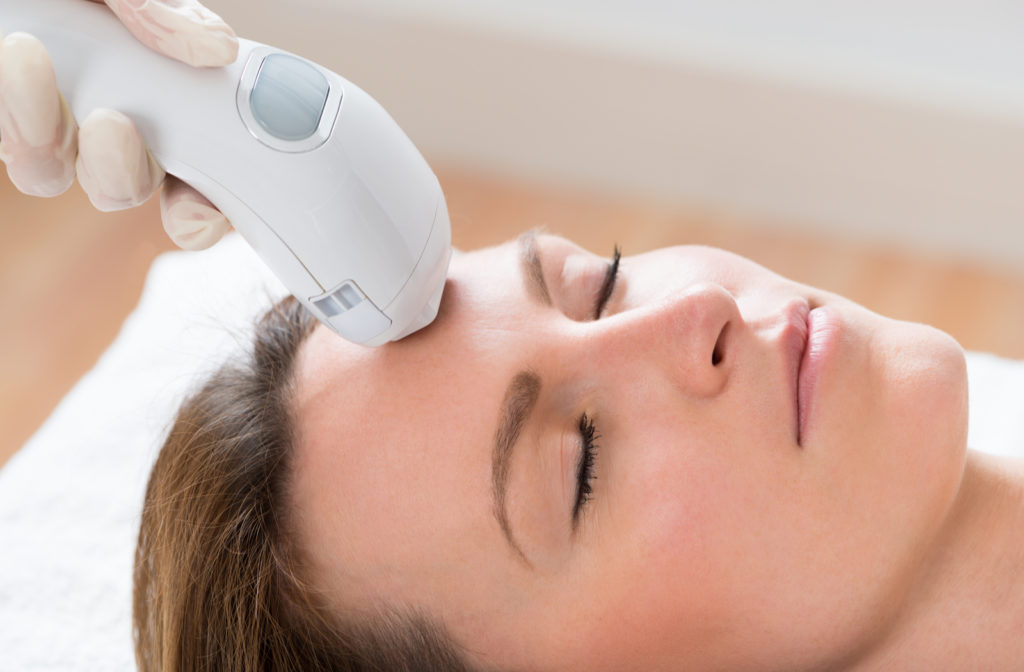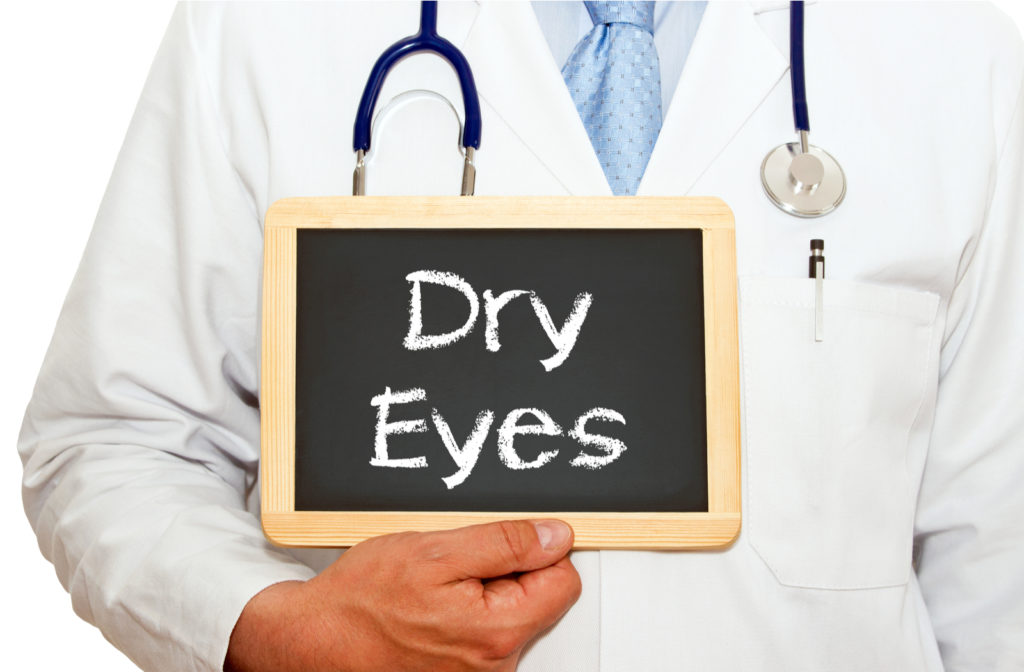Dry eye disease affects millions of Canadians, causing them to suffer from irritated eyes. Thankfully, your optometrist has many different ways to treat this condition and relieve your symptoms. One of these treatment methods is intense pulsed light therapy.
How does intense pulsed light therapy work? Continue reading to learn more about this treatment, including what it is, how it works, and what you can expect during your appointment.
What is Dry Eye Disease?
Dry eye disease is a chronic condition where your tears cannot effectively lubricate your eyes. Your tears are necessary for keeping the surface of your eye clean and free of debris. There are 3 different layers of the tear film: oil, aqueous fluid, and mucin.
When issues arise in the tear film, your eyes can become dry and inflamed. Approximately 6 million Canadians suffer from this condition.
There are many symptoms of dry eye disease, including:
- Eyes that burn, itch, or scratch
- Mucus in or around your eyes
- Light sensitivity
- Eye redness
- Foreign object sensation
- Difficulty wearing contact lenses
- Watery eyes
- Blurred vision
- Eye fatigue
Causes of Dry Eyes
Dry eyes can happen for many different reasons. However, the general cause of this condition comes down to a combination of different factors. Tear quality, tear volume, medical conditions, and environmental factors can dry your eyes.
- Poor tear quality: When the ingredients present in the tear film are missing or imbalanced, it can lead to dry eyes
- Inadequate tear volume: When the glands that create tears become compromised or outside factors affect tear production, it can lead to dry eye disease
- Medical conditions: Conditions like diabetes & other disorders can lead to dry eyes
- Environmental factors: External factors like smokey conditions, ill-fitting contact lenses, & dry climates can affect the tear film & worsen dry eye symptoms
A frequent issue related to dry eyes is meibomian gland dysfunction. It’s one of the most common causes of dry eye disease. This condition occurs when the glands providing the oil for your tear film become clogged or blocked.
This oil is essential for preventing your tears from evaporating too quickly. When these glands become compromised, your tears dry out faster, and the eye becomes irritated and inflamed. One of the ways your optometrist can treat this inflammation is with intense pulsed light therapy.

What Is Intense Pulsed Light (IPL)?
Intense pulsed light (IPL) therapy is an effective dry eye treatment. It uses wavelengths of light to target the blood vessels around the eye. This treatment decreases inflammation in the area and liquefies the blockages present in the glands in your eyelids (meibomian glands).
The Benefits of IPL
The main positives of IPL are its ability to treat inflammation and blocked meibomian glands. Besides these aspects, this treatment has other benefits:
- It’s non-invasive
- Treatment is typically well-tolerated
- Results are maintainable
IPL can help restore functionality to your tear film and improve your quality of life. A previous study on IPL discovered it improved tear breakup time in 87% of patients.
How Does IPL Work for Dry Eye Disease?
IPL therapy utilizes scattered light pulses to treat the blood vessels causing inflammation within your eye. These pulses simultaneously heat your meibomian glands. Removing blockages from these glands allows oil to flow, helping your tears lubricate your eyes for longer.
IPL typically requires multiple treatments to reach your desired results. On average, 4 treatments lead to a noticeable improvement.
Your optometrist can determine how many treatments you need and answer any questions you have. If you’re interested in IPL, what can you expect during treatment?
What to Expect During IPL Treatment
Your optometrist needs to determine your eligibility before you can receive IPL therapy. If IPL is suitable for you, your eye doctor will book your appointment and inform you how to prepare for your treatment. You may need to avoid extensive sun exposure, tanning creams, and tanning beds.
During Treatment
Your treatment begins with the application of a gel on the treatment area. Treatment is generally painless, but you may feel a mild sensation when energy hits your skin. You’ll wear protective glasses as your optometrist treats you.
After Treatment
You may experience a few side effects after your treatment that should resolve in a few days. Some of these side effects include:
- Swelling
- Redness
- Light sensitivity
After treatment, your optometrist will plan out your remaining appointments, generally scheduled a few weeks apart. They can recommend other in-office and at-home treatments if IPL isn’t for you, such as:
Don’t Live With Dry Eyes
IPL is an effective treatment for dry eye disease, but it’s not the only one your optometrist has. They can help you find the best treatment for your ocular needs. You don’t need to live with dry, irritated eyes.
If you have symptoms of dry eye disease or are interested in IPL therapy, contact your optometrist.

